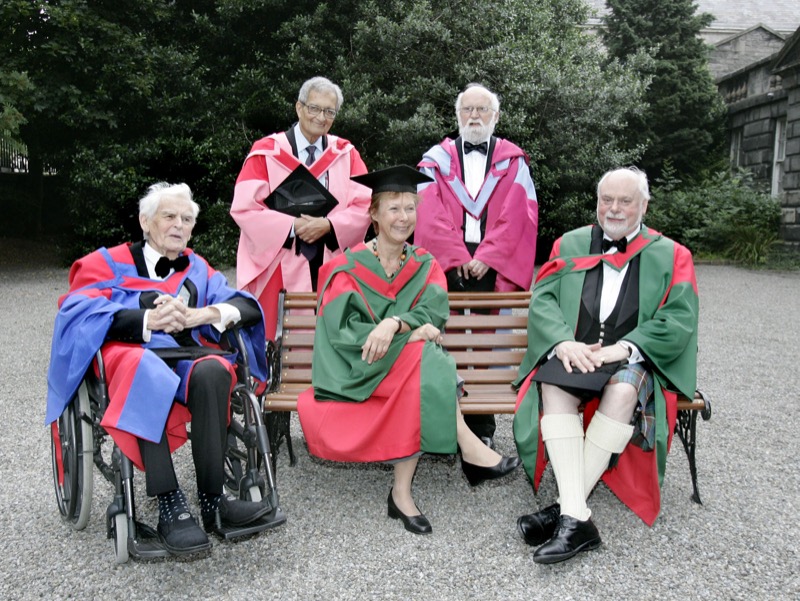Trinity salutes Nobel Prize in Chemistry winner, Sir Fraser Stoddart
Posted on: 05 October 2016
Sir Fraser Stoddart, awarded an honorary Doctor in Science degree at Trinity in 2009, is the 2016 Nobel Prize in Chemistry winner, along with Jean-Pierre Sauvage and Bernard L Feringa. The trio have been honoured for their design and production of tiny ‘molecular machines.’
The first step towards building a functioning molecular machine was taken by Jean-Pierre Sauvage in 1983, when he linked two ring-shaped molecules together to form a chain, called a catenane.
Normally, molecules are joined by strong covalent bonds in which the atoms share electrons, but in the chain they were instead linked by a freer mechanical bond. For a machine to be able to perform a task it must consist of parts that can move relative to each other. The two interlocked rings fulfilled exactly this requirement.
The second step was taken by Sir Fraser Stoddart in 1991, when he developed a rotaxane. He threaded a molecular ring onto a thin molecular axle and demonstrated that the ring was able to move along the axle. A molecular lift, a molecular muscle and a molecule-based computer chip are just a few developments made to date.
Bernard Feringa was then the first to develop a molecular motor; in 1999 he made a molecular rotor blade spin continually in the same direction. Using molecular motors, he rotated a glass cylinder 10,000 times bigger than the motor, and also designed a ‘nanocar’.
The 2016 Nobel Laureates then successfully enabled their molecular machines — a thousand times thinner than a strand of human hair – to operate in energy-filled states, which, crucially, means that their movements can be controlled.

Molecular machines will most likely be used in years to come in the development of things such as new materials, sensors and energy storage systems, while they may also have applications in the field of targeted medicine; for example, they may one day be able to move around inside the human body and deliver drugs to individual target cells on command.
Professor Stoddart is currently Professor of Chemistry at the Northwestern University in Chicago. He was formerly Acting Director of the California NanoSystems Institute (CNSI) and the Fred Kavli Chair of NanoSystems Sciences at UCLA. He has been a strong supporter of the development of nanoscience in Ireland and was welcomed to Trinity in 2009 to receive his honorary doctorate.
Speaking about the significance of the work that led to him sharing the 2016 Nobel Prize, Professor of Chemistry at Trinity, Thorri Gunnlaugsson, said: This is truly a fantastic day for chemists and specially for those of us who are involved in the development of supramolecular and nano-chemistry. The development of molecules that are functional and can carry out actions such as programmed operations, and can mimic macroscopic function on the nanoscale, such as that of machines, has been at the heart of this area of chemistry.”
“Today’s announcement of the Nobel Prize in Chemistry being awarded to Professors Stoddart, Sauvage and Feringa, for their development of molecular machines, acknowledges the major scientific achievement made to date in this important field.”
